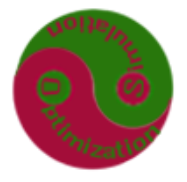(1) Introduction
Artificial neural networks-cellular automata(ANN-CA) model, a nonlinear tool ,has been applied successfully in LUC(Simulation of land use change) simulation. In the model, CA performs as bottom-up simulation framework.
ANN is used as data mining tools to mine the transition rules of LUC for CA; it means that ANN is used to understand the underlying patterns in LUC data. ANN has the advantage of being able to observe relationships in data by emulating the brain’s ability to sort patterns through the interconnected systems of many neurons. ANN is an appropriate global parametric model for simulating LUC whereas various spatial drivers simulate land transformation in a non-linear way. Also, ANN is very effective in handling incorrect and inferior data, and capturing non-linear, complex features in modelling processes; therefore, it has been generally accepted that they are capable of achieving results with superior accuracy in modelling.
(2) Schematic and description
The Training phase of ANN-CA : The artificial neural network was trained with sampled data to obtain the network weight value. The input data are: various factors that affect land use change, statistical values of land use types in the neighborhood window, and current land use types. The output value is the probability value of various land use types.
The Simulation phase of ANN-CA: The type to be converted is obtained through the artificial neural network, and it is judged whether the current grid can be converted. The termination condition is reached and the simulation process ends. During the simulation, the probability values of all land types are obtained through ANN. The maximum value corresponds to the type of land use to be converted, and then the threshold comparison is used to determine whether it can be converted.

(3) Calculation formula
(4) Instruction
ANN-CA is suitable for conducting many types of land-use conversions.
ANN-CA uses the strategy of defining the number of urban land grid conversions as the termination conditions for the simulation. That is, the amount of conversion at the termination of the simulation = the number of grids of urban land at the time of simulation termination - the number of grids of urban land at the initial simulation time.
(5) Example result










